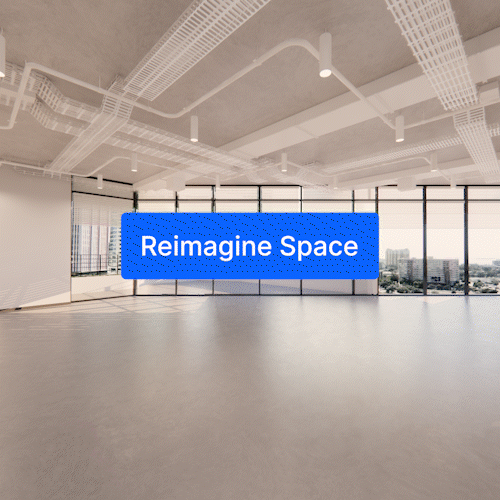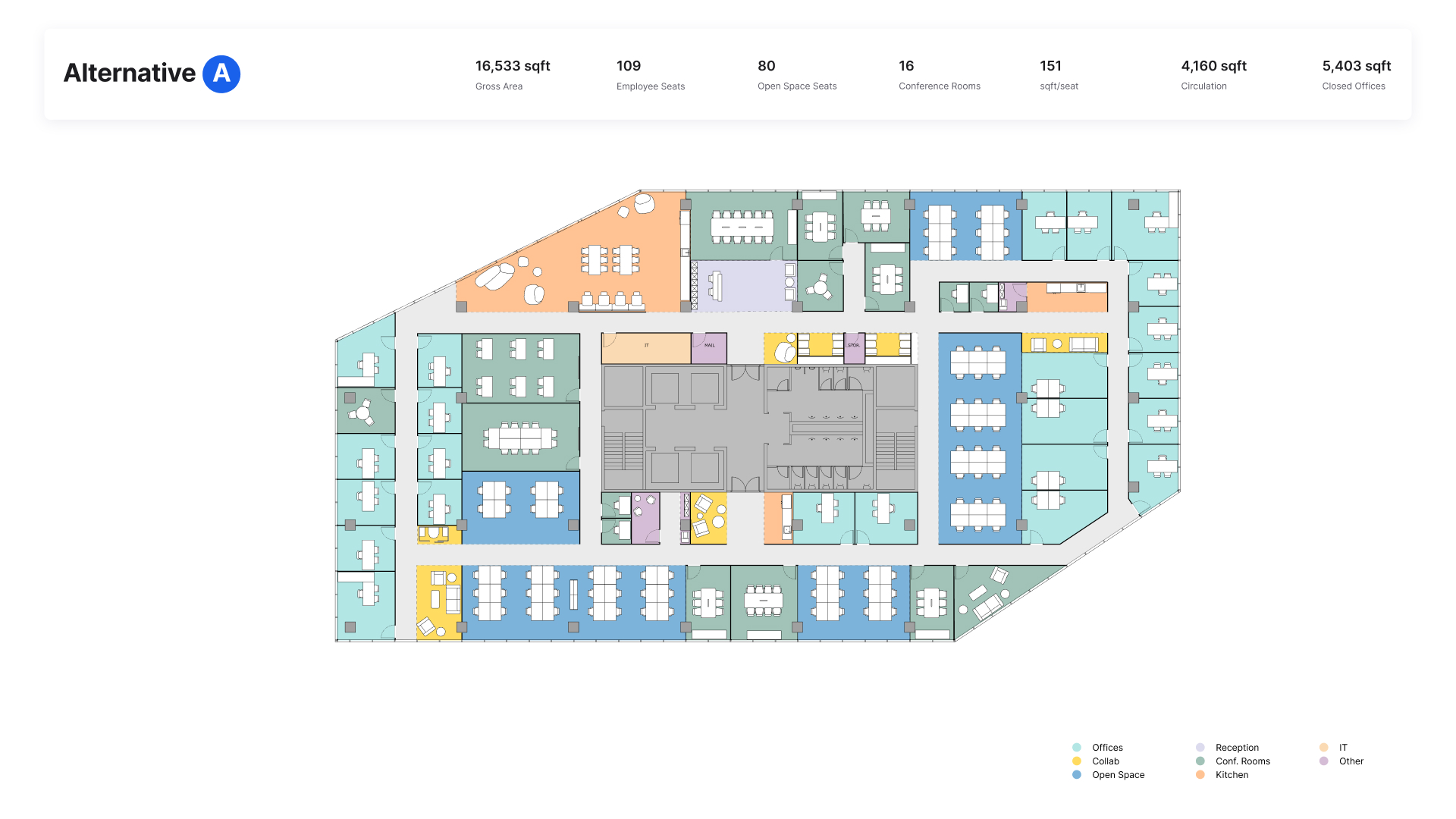When new technology meets decades-old industry pain points, the results can be revolutionary.
qbiq is the first to crack automatic architectural planning capabilities, and has already boomed the market by delivering over 300 million square feet to clients worldwide. By applying generative AI to real estate future-fit design, qbiq has democratized this once-laborious and time consuming process, enabling anyone with a subscription to plan, visualize and optimize spaces at scale literally overnight. By putting the power to create future-fit design into the hands of everyone from building owners to GCs to prospective tenants, qbiq is shortening the deals cycle to a previously-unthinkable degree. TRD sat down with qbiq Co-Founder & CEO Leeor Solnik, Head of Sales for North America Mark Tepper, and Head of Marketing Avichai Cardozo Tenenbaum to get an inside look at how the qbiq team is leveraging AI to change the real estate industry.

The Brave New World of AI
A veteran of the tech industry, Solnik first saw the potential of applying AI to architecture in 2018. His research uncovered that, other than a few articles out of MIT, no one has succeeded in solving the problem of automatic architectural planning with AI.
“The technological barriers to what we do are huge,” explains Solnik. After creating a demo and garnering interest in the concept among investors, he assembled a team of tech experts and PhDs to create the technology that would ultimately power qbiq. The initial release was greeted with so much enthusiasm that the team scrambled to keep up with the demand.
“What we’re finding is that there’s been this same process for 30 years,” says Tepper. “Everything goes to an architect, transactions depend on them, and it takes them a while to create a single test fit.”
qbiq not only reduces the turnaround time on these future-fit designs from weeks to hours, but provides a new standard for the “Future-fit” package that includes multiple test fits, virtual tours, rendered images performance comparison, CAD / Revit and more. What had been a manual process requiring the efforts of multiple architects and weeks of work (or months of work for rendered tours) is now available to anyone who needs to plan and visualize a future space.
As Tenenbaum explains, the impact of putting this power into the hands of landlords, brokers, tenants, and GCs fundamentally changes how they approach deals.
“Decision making in the real estate industry was, basically, dependent on architects,” he says. “By giving real estate professionals the ability to make an architectural decision themselves, their deal cycles will shorten and the whole industry will change.”
“That’s the beauty of AI,” adds Tepper. “You can democratize the use of technology, which then brings down the costs and gets things done a lot faster.”
The first major enterprise to adopt qbiq tech was JLL, who uses qbiq around the globe to envision future spaces for prospective clients.
“We have a different value proposition for each segment of the industry,” says Solnik. “But the gap in the market was this huge need for high scale, short turnaround architectural capabilities, and that’s exactly what our technology brings.”
Use Cases Across the CRE Industry
qbiq has become a fundamental part of the workflows of various types of CRE clients, from building owners to GCs to internal leasing teams and architectural firms.
For building owners, the tech allows them to improve building ROI by creating a competitive advantage in a tough market, not only shortening the deal cycle but increasing conversion rates when prospective tenants come to look at your space.
“When any tenant comes through your door, you can give them 3 potential fit-out plans incorporating high-end renderings,” explains Tenenbaum, who notes that, thanks to qbiq’s subscription model, you can create as many plans and visualizations as you wish, immediately, instead of paying for them one by one.

“You can give them a future-fit design package in 24 hours, and it’s very cost effective,” says Tepper. The numbers are stark: Tepper points out that a single test fit for a 30,000 square foot office floor plan could run a landlord $4,500 and take two weeks for an architecture firm to complete. If you’re a landlord, having a qbiq subscription and being able to provide unlimited future-fit packages, including test fits, virtual tours, rendered images and more on demand with roughly the same expenditure, is “a great way to differentiate yourself” in the eyes of prospects.
For general contractors, the ability to add preliminary planning to their business is a way to work directly with the owners, increasing their pipeline significantly. That way, GCs don’t need to wait for the architect’s biddings at the end of the cycle and can engage with their potential clients early on in the process.

Where is the architect in all of this? One of the major fears about AI is that it will replace workers, and therefore qbiq could be viewed as an enemy by the profession.
But Solnik and his team have found that architects are enthusiastic about their platform, recognizing it as a valuable “co-pilot” which, much like CAD before it, cuts down on manual labor and lets architects focus on more interesting and profitable aspects of their work.
“Preliminary planning are a money losing business for architects,” explains Solnik, who notes that test fits were a pain point for architects as well. By automating this process, it frees up architects to focus not only on the later, more “interesting” phases of planning and design, but also generate more business by gaining an edge on other firms.
“Architects are realizing, ‘If I don’t use qbiq, and my competitors are, they can get multiple preliminary plans back to the client in 24 hours while takes me a week to two weeks,’” says Tepper. “‘I could lose out on the more profitable side of the business.’”
Exponential Growth
Since officially launching in Q3 2022, qbiq has grown in leaps and bounds.
“In the first quarter out of launch, we delivered more than 5 million square feet of plans,” says Solnik, who notes that qbiq is delivering more square feet every single week. “We’re on pace to deliver 1 billion square feet by next year.”
The platform regularly adds new features, most recently full Revit integration that enables architects to easily port qbiq test fits into their “professional ecosystem.” Solnik told us about another feature on the immediate horizon that will generate bill of materials and material cost analyses along with each layout plan, giving decision makers even more information up front about which plan is right for them.
If you are behind with office space leasing, qbiq may very well be your way to catch up.


